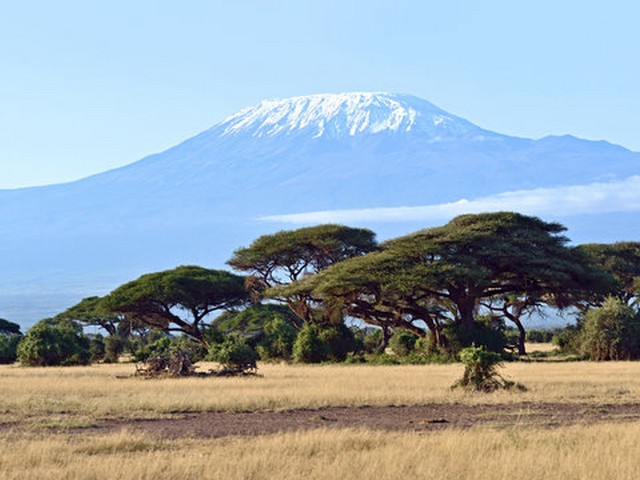Kilimanjaro Trek Through Diverse Ecosystems: A Journey of Discovery
The Ultimate Adventure Awaits at Mount Kilimanjaro
Embarking on a Kilimanjaro Trek Through Diverse Ecosystems is not merely a climb; it’s a voyage through a tapestry of natural wonders, each layer unfolding a story, an ecosystem, and a challenge. At the Kilimanjaro Centre For Trekking and Ecotourism (KCTE), we invite you to traverse the roof of Africa, where the world seems just a fingertip away from the heavens. This journey promises not only to test your limits but also to expand your understanding of the natural world, making it an unforgettable expedition.
Discover the Layers of Life on Kilimanjaro
Mount Kilimanjaro is more than just a mountain; it is a montage of ecological systems that vary dramatically with altitude. As you ascend this majestic peak, you travel through a series of distinct biomes, each offering unique flora, fauna, and landscapes. Here’s how your journey through these ecosystems will unfold:
1. Cultivated Footslopes: The Gateway to Richness
Your adventure begins in the lush, cultivated lands at the base of Kilimanjaro. Here, the Chagga people have thrived for centuries, turning the rich volcanic soil into fertile fields of bananas, coffee, and corn. This cultural and agricultural introduction sets the stage for the natural wonders to come.
2. Rainforest: The Moist Breath of the Mountain
As you ascend, the environment transforms into a dense rainforest, shrouded in mist and echoing with the calls of exotic birds. This emerald canopy is home to colobus monkeys, vibrant butterflies, and elusive leopards. The air here is fresh with the scent of wildflowers and damp earth, a refreshing quench as you prepare for drier realms above.
3. Heather-Moorland: The Haunting Wilderness
Leaving the forest behind, the landscape opens into the expansive heather-moorland zone. This area feels otherworldly, with its giant heathers and vast skies. The temperature drops and the wind picks up, carrying with it the whispers of ancient volcanic activity. It’s a place for reflection and for facing the physical challenges that lie ahead.
4. Alpine Desert: The Surreal Expanse
Perhaps the most surprising ecosystem on Kilimanjaro is the alpine desert. Amidst minimalistic beauty, this zone presents a lunar-like landscape. Sparse vegetation, intense solar radiation, and extreme temperature swings from day to night challenge all adventurers. Here, resilience is tested, but the rewards are unparalleled views and a profound sense of accomplishment.
5. Summit Ice Fields: The Glacial Crown
Near the summit, the air thins and the skies stretch into eternity. Few life forms can endure here, but the sight of the glacial fields gleaming under the African sun is breathtaking. This icy realm near Uhuru Peak, standing proudly at 5,895 meters, offers a silent testament to the power of nature’s sculpting hands.
The Call of Kilimanjaro: Why Trek with Us?
Expertise and Safety
At KCTE, we understand that trekking Kilimanjaro is a serious undertaking. Our guides are highly trained and experienced, ensuring your safety and offering insights into the environmental and cultural significances of the regions you traverse.
Ecotourism Commitment
We are committed to the principles of ecotourism, striving to minimize our environmental impact and maximize community benefit. Trekking with us means supporting sustainable practices that help preserve Kilimanjaro’s ecosystems for future generations.
Tailored Experiences
We offer various routes and can tailor your trek according to your fitness level and interests. Whether you seek a challenging ascent or a more leisurely pace, we ensure your journey is as rewarding as the destination.
Join Us: Trek Kilimanjaro and Embrace the Adventure
A trek up Mount Kilimanjaro through its diverse ecosystems is more than just a climb; it’s an exploration of the natural world and a testament to the spirit of adventure. Whether you’re an avid trekker or a curious traveler, Kilimanjaro offers a unique journey that promises personal transformations and breathtaking views. Let the Kilimanjaro Centre For Trekking and Ecotourism guide you to the summit.
Are you ready to conquer the highest peak in Africa? Book your Kilimanjaro climbing adventure with KCTE today, and stand on top of the African continent!
Frequently Asked Questions
What is the best time to climb Kilimanjaro?
The best times to climb Kilimanjaro are during the dry seasons: January to mid-March and June to October. These months offer the clearest skies and safest climbing conditions.
How fit do I need to be to climb Kilimanjaro?
While you don’t need to be an elite athlete, a moderate level of fitness is required. Most importantly, you should be able to hike for several hours consecutively over multiple days. We recommend starting a training regimen several months before your trek.
What should I pack for the trek?
Packing the right gear is crucial. Essential items include thermal clothing, a sturdy pair of hiking boots, a sleeping bag rated for freezing temperatures, sun protection, and plenty of layers. We provide a detailed packing list upon booking.
How do you support local communities?
At KCTE, we employ local guides and staff, support local businesses for supplies, and contribute to community initiatives. By trekking with us, you help provide sustainable income for local communities around Kilimanjaro.
Embark on this incredible trek through Kilimanjaro’s diverse ecosystems with us at KCTE. Experience the beauty, challenges, and triumphs of a journey like no other. Contact us today to begin planning your adventure to the peak!




